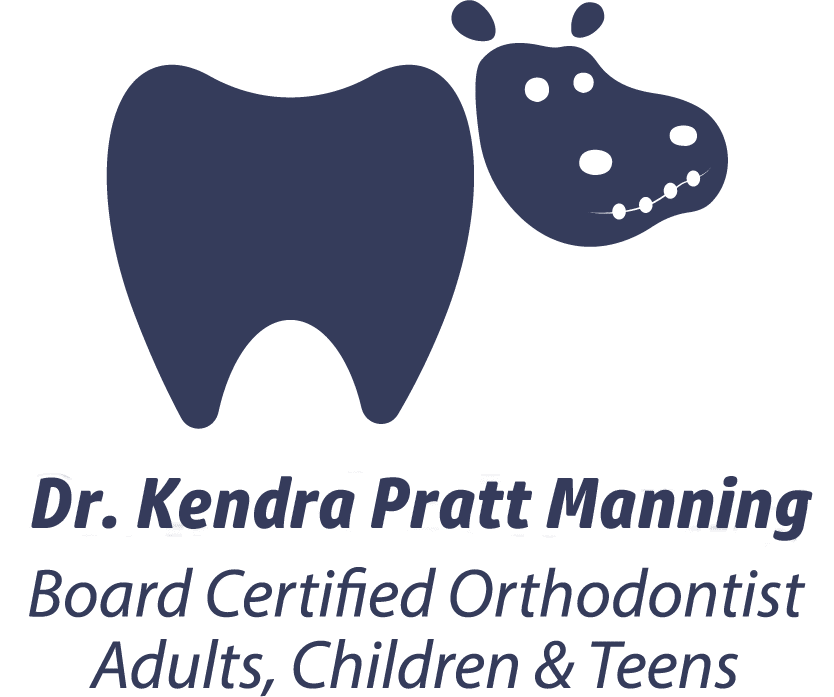
Early Orthodontic Treatment for Children
Early interventional orthodontic treatment focuses on prevention rather than correction. By creating a healthy space for adult teeth to grow, your child can avoid complicated orthodontics and extractions due to bite issues later.
All children are ready for their first pediatric orthodontist assessment when their upper central incisors start to emerge – ideally between ages six and seven. Prevention is key to ensuring healthy musculoskeletal growth in the jaw for future adult teeth. While all children should have an early orthodontic assessment, it is important to note that early intervention is necessary only when indicated and not in every patient.
What are the Benefits of Early Interventional Orthodontic Treatment in The Woodlands, TX?
Early orthodontics are essential for preventing complex bite issues in children. An orthodontist can identify subtle discrepancies and then employ techniques, appliances, and methods to assist proper jaw development.
The benefits of early interventional orthodontic treatment include:
- Guiding adult teeth to grow into a healthy position
- Encouraging a symmetrical appearance and self-esteem
- Avoiding painful and costly jaw surgery
- Eliminating the need for braces later OR
- Drastically reducing the invasiveness and length of time for braces
- Improving how the lips meet
- Correcting and avoiding trauma from bad habits like thumb sucking
How Can You Tell if Your Child Needs Early Orthodontics?
Parents can look for a few red flags that indicate it’s time for an early orthodontics assessment from a Board Certified Orthodontist in The Woodlands, Texas.
These warning signs are:
- Early or late loss of baby teeth
Mouth breathing
Trouble chewing or biting
The jaw shifts or makes any noise like cracking or popping
Speech problems
Teeth grinding or clenching
An asymmetrical facial appearance
Biting the cheek or roof of the mouth
Bad oral habits like pen and fingernail biting, or sucking of the finger, thumb, cheek or lower lip
Even if your child doesn’t exhibit any of the symptoms above, pediatric orthodontist Dr. Kendra Pratt Manning can identify issues with baby teeth that indicate the need for early orthodontic treatment. Bite problems in baby teeth are often very subtle and even invisible to the untrained eye.
There are many bite problems that can develop, however, they can be fixed if caught in time. They include:
- Crossbites
- Crowding problems
- Open bites
- Protrusions
- Deep bites
- Underbites
- Spacing issues
What Does Early Orthodontic Treatment in The Woodlands, Texas Involve?
Early interventional orthodontic treatment is much different than standard orthodontic care.
Pediatric orthodontist Dr. Kendra Pratt Manning in The Woodlands, TX won’t employ braces to correct teeth. Instead, her early orthodontic treatment focuses on preventing adult bite issues by creating a proper environment with enough space for teeth to grow.
Treatment varies based on your child’s needs, but it might include Habit Appliances to:
- Gradually move teeth
- Expand the jaw
- Properly align jaw position
- Maintain space for the adult dentition
Children orthodontist Dr. Pratt Manning might also perform strategic extractions of baby teeth as-needed to assist erupting permanent teeth.
Contact Dr. Kendra Pratt Manning Pediatric Orthodontist Today
Six or seven might seem young for orthodontic care but prevention is always the best treatment.
In many cases, children won’t require any early orthodontic treatment. Nevertheless, regular assessments from Dr. Kendra Pratt Manning can provide a barometer for oral development and keep an eye on minor issues as your child grows.
If you have any questions about early orthodontics, contact Dr. Kendra Pratt Manning’s office in The Woodlands, TX today, schedule a free consultation, or give us a call at 281-367-0050 (Woodlands) or 936-596-1200 (Montgomery).
Early Interventional Orthodontic Treatment for Children FAQs
Recognizing the need for early interventional orthodontic treatment for children is essential. It’s important to understand the benefits, processes, and costs of early orthodontic treatment. We’re dedicated to helping young patients achieve healthy, beautiful smiles through proactive care.
Early orthodontic problems to look out for include crossbites, thumb/finger sucking, severe crowding, spacing issues, protruding teeth, and inbalances jaw growth. Regular orthodontic checkups can help identify these issues early on.
The American Association of Orthodontists recommends children visit an orthodontist for the first time around 7 years old. At this age, orthodontists can identify potential issues and determine if early intervention is necessary. This is also the age when some of the incisors are erupting.
Early interventional orthodontic treatment, also known as Phase 1 treatment, addresses dental and jaw issues in growing children before all their permanent teeth have erupted. This proactive approach can help prevent more serious issues later in life. Most children will not need early treatment, but it is best to have your orthodontist screen for the few children who do.
Early orthodontics can guide jaw growth, correct harmful oral habits, and prevent future dental problems. This proactive approach can reduce the need for extraction of adult teeth, jaw surgery and minimize treatment time with braces during adolescence.
Typically, a crossbite is the result of the upper jaw being smaller than the lower jaw. This can lead to crowding, wear on the teeth, and even breathing issues. When a child has a crossbite, they usually pick a side to shift to when chewing. This leads to asymmetric jaw growth, where one side of the lower jaw grows longer than the other side. If untreated until the teenage years, the patient will usually have noticeable facial asymmetries. A palatal expander on the upper arch can address all of these things, help develop the upper archform, and prevent asymmetric growth.
The upper jaw usually stops growing by 12 years of age. Most adolescents continue to grow after that and then the lower jaw starts growing during their growth spurt. If a child has an underbite, they are best treated between the ages of 8 to 10 years old, in a phase I early interventional treatment to help develop the upper jaw. This is typically successful and prevents jaw surgery if treatment is delayed.
The duration of early interventional orthodontic treatment varies depending on the child’s needs. Typically, Phase 1 treatment lasts between 6-12 months.
Some children may still require braces or additional orthodontic treatment (called Phase 2) after their adult teeth erupt to achieve optimal results. However, early treatment can simplify and shorten this second phase of treatment.
Without early intervention, orthodontic issues may worsen over time and require more invasive treatments later in life. Early treatment can help prevent the need for things like extractions or surgery.
During Phase 1, the orthodontist addresses specific issues such as jaw growth, tooth eruption, and bite correction using various appliances, like expanders. This phase aims to create the best foundation for future dental development.
Early interventional orthodontic treatment can provide long-term benefits. It could make for a simplified future orthodontic treatment, improved facial and dental aesthetics, and a reduced risk of dental issues later in life.
The cost of Phase 1 early orthodontic treatment varies depending on the child’s specific needs and the required appliances. If phase I is necessary, our office credits a portion of the fee paid in phase I towards phase 2 treatment, if required. For a personalized quote, schedule a consultation with Dr. Kendra Pratt Manning.
To learn more about early interventional orthodontic treatment for children or schedule a consultation with Dr. Kendra Pratt Manning, please contact our office today.

